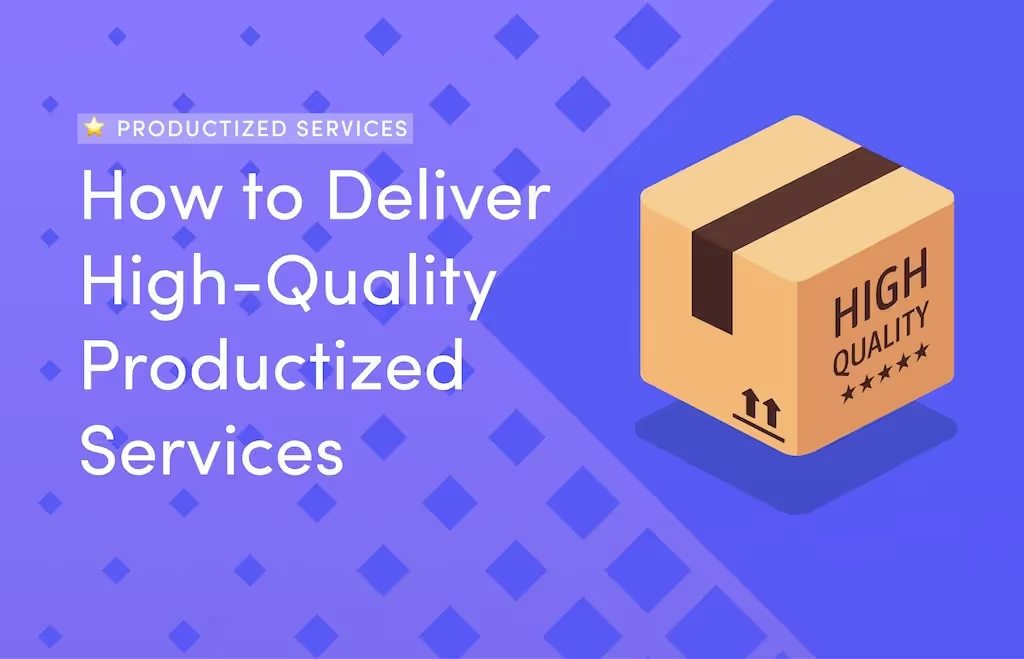Productizing your services offers you greater freedom to scale your business and removes the time limitation of bespoke client services.
Often, the difference between a successful productized service business and a less successful one is standardized operating procedures, or SOPs.
Why should you use SOPs to document your service process?
When your goal is to operate as quickly and efficiently as possible, having your service processes written down gives you an easy starting point to optimize them for efficiency, output quality, and uniformity of performance.
Instead of having to focus on the processes themselves, you can now start looking at how you can do each step of the service process better and faster.
Over time, you'll find your processes take less time and effort to complete while producing higher-quality results, leaving you time to focus on the positioning of your business and finding your first customers.
Kevin, who started a WordPress Support and Maintenance business, believes “getting organized at the beginning with SOPs” was key to growing his business into a $1k+/month support agency.
He told ProductizedStartups.com, “I used a lot of the methodology from a book and course called Work The System. This allowed us to automate and organize the business right from the start.”
Five steps to creating SOPs your team can actually use
Step 1: Determine your goals
Define what the end result is for the SOP you’re creating. For productizing your service, your goal will be to take the services you offer and create more straightforward and repeatable processes that make it easier to offer your services as a product.
Step 2: Ask for input from stakeholders
It's essential to include all stakeholders in the process to avoid your SOP possibly missing elements that could help streamline your service processes.
This gives you a clear picture of all the steps involved in productizing your service and running your business. SOPs are not only essential for your product, but also for the processes of onboarding clients, lead management, marketing, etc.
Step 3: Determine the scope and format of your SOP
Outline what steps are necessary to include in your SOP. Consider which processes are essential and which ones can simply be referenced.
Once you’ve determined the scope of your SOP, you can choose the format best suited for the service processes that will be included. Some common SOP formats are:
This kind of SOP is best suited for processes where one step's outcome could affect how your business or team executes subsequent steps. It visually outlines each step with every outcome in a workflow, which can easily be followed by any member of your team.
In many cases, it will be sufficient to create a simple step-by-step, numbered, or bulleted list outlining the steps to complete the process.
A hierarchical SOP will be set up similarly to a step-by-step SOP, but will include additional details within each step and allow for steps that require decisions.
Step 4: Outline and write the SOP
Once you've defined the scope and decided on a format for your SOP, you can begin with the planning and writing of the document.
Be sure to include some of the following elements to ensure your SOP is as complete as possible:
- Include a title page with the title of the procedure or productized service that the SOP is being created for, an SOP identifying number, a publication or revision date, the name of your company, and the names and titles of the individuals involved in creating the document.
- Include a table of contents if your SOP is particularly large with many pages. This makes it easy to follow and understand.
- Next, you'll include the methodology and procedures—the most important part of the SOP. Here you'll describe the actual steps and processes involved in productizing your service. Remember to be as detailed and straightforward as possible to make this document easy to use and understand.
- You can also include a glossary and references for any steps or procedures that may require additional explanation.
Step 5: Review, test, edit, repeat
After completing the document, be sure to review the contents and test the procedures to ensure every step of your service process has been included.
Remember to look at the SOP every time you finish the process and try to identify areas where you can improve and streamline your service process. Think about what you can change to use fewer resources or take less time to complete every step.
Vic, founder of Memberfix, only started seeing real growth in his company once they completed their SOPs.
“Bringing on our operations manager, Viktor, was a huge shift for us,” he said. “He is responsible for creating SOPs, trainings, hiring, and other efficiency-gaining activities.”
Streamline, step back, and scale with SOPs
Creating an SOP ensures greater efficiency and consistency, so you can step back and watch your business grow.
To learn about other ways you can simplify your service process, check out what ManyRequests has to offer.


